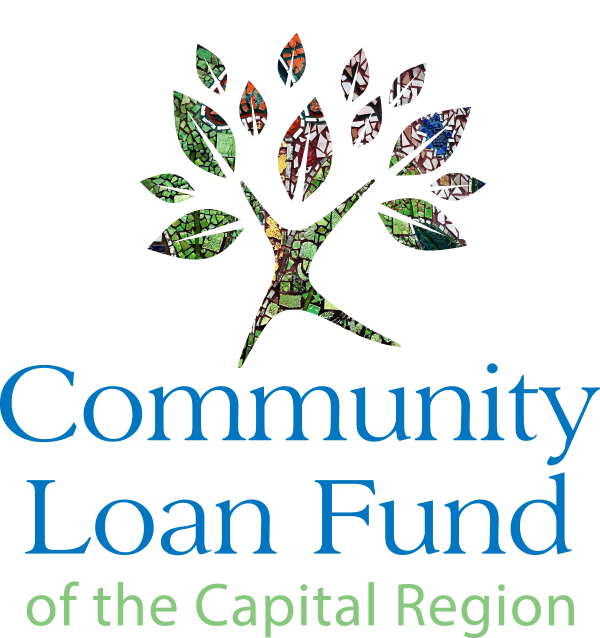Language Assistance Plan (LAP)
Effective 5/22/2024
Background
Community Loan Fund of the Capital Region, Inc. (CLFCR) is a certified-Community Development Financial Institution (CDFI) that was founded in 1985 and is located at 255 Orange Street, Albany, NY 12210. CLFCR’s Target Market includes Black individuals, low-income individuals, and eligible low-income census tracts within its service area. CLFCR also plans to apply for persons with disabilities as a Target Market in the 2024 CDFI Recertification process.
CLFCR’s service area includes the 11 counties that make up the Capital Region of New York which includes Albany, Columbia, Fulton, Greene, Montgomery, Rensselaer, Saratoga, Schenectady, Schoharie, Warren, and Washington counties.
The Community Loan Fund of the Capital Region provides unique access to financing and business training to nonprofit organizations, small businesses, and entrepreneurs, in partnership with community minded stakeholders, helping deliver essential services to the economically underserved.
As a loan fund, CLFCR meets its mission through the deployment of loans to small businesses and nonprofit organizations. CLFCR also provides training and technical assistance services to entrepreneurs and small businesses that includes workshops, one-on-one technical assistance, and a business planning course.
Policy Statement
As a Community Development Financial Institution, it is the policy of Community Loan Fund of the Capital Region, Inc. (CLFCR) to not discriminate against any person who may have Limited English Proficiency (LEP). The following Language Assistance Plan will identify the responsibilities of CLFCR for assisting LEP individuals with timely and meaningful access to documents and information about its services (Executive Order 13166 and Title VI of the Civil Rights Act of 1964). The purpose of the LAP is to make efforts to reduce and eliminate barriers for LEP individuals who utilize CLFCR services.
Four Factor Analysis
- Factor 1: The number or proportion of LEP persons eligible to be served by or likely to encounter CLFCR services. Using the American Community Survey information, found at Census.gov using the links below, CLFCR has collected information on LEP individuals in its service area. CLFCR’s main findings from the demographic information seen below match its experience serving LEP populations. Spanish is the most common language spoken by the LEP population, while there are a wide variety of other languages spoken in less frequency. The Capital Region’s cities contain higher percentages of refugee populations. The rural areas of the Region, as seen in the Amsterdam Micro Area, have a larger proportion of Spanish speakers.
More than two-thirds of individuals who speak another language can speak English “very well,” as defined by the American Community Survey. Likewise, CLFCR staff has found that most of the LEP individuals who utilize CLFCR services fall into the B1-B2 range of the CEFR levels of language proficiency, meaning that they understand common expressions and main points, and can describe background and events in simple terms.
Albany, Troy, Schenectady Metro Area
- 7% of population 5 years and over speak a language other than English, while 7.6% of individuals 18 and over speak a language other than English
- Of the individuals who speak a language other than English: 2.8% are Spanish speakers, 3.8% speak other Indo-European languages, 2.2% speak Asian and Pacific Island languages, and .8% speak Other languages
- 4% of individuals who speak a language other than English speak English “very well”
- 6% of individuals who speak a language other than English speak English less than “very well”
https://data.census.gov/table/ACSST1Y2022.S1601?g=310XX00US10580
Amsterdam, NY Micro Area
- 2% of population 5 years and over speak a language other than English, while 10.1% of individuals 18 and over speak a language other than English
- Of the individuals who speak a language other than English: 7.3% are Spanish speakers, and 4.3% speak Other Indo-European languages
- 7% of individuals who speak a language other than English speak English “very well”
- 3% of individuals who speak a language other than English speak English less than “very well”
- Factor 2: The Frequency With Which LEP Individuals Come in Contact With the Program. The frequency CLFCR expects to have contact with LEP individuals has been evaluated based on experience gained through the delivery of services, as well as how methods of delivery impact the frequency. LEP individuals interact with CLFCR in the following manners:
- CLFCR lending staff. These staff members meet with clients over the phone and in person. They assist clients with the preparation of loan applications, and provide technical assistance to borrowers throughout the lifespan of their loan. CLFCR lending staff also routinely interact with clients who are interested in learning more about loan availability.
- CLFCR Training and Technical Assistance Staff. These staff members meet with clients in person, over the phone, and using Zoom. They provide information relevant to small businesses and starting a small business.
- CLFCR’s website
- CLFCR documents that clients use to access services, including intake forms, templates, loan application, and loan closing documents.
- Factor 3: The Nature and Importance of the Program, Activity, or Service Provided by the Program. CLFCR staff have assessed the nature and importance of CLFCR’s services and their impact on LEP individuals and their families.
- Factor 4: The Resources Available to the Recipient and Costs. CLFCR has discussed language assistance strategies with partnering organizations to determine the best resources to provide LEP assistance.
Providing Language Assistance Services
CLFCR uses two methods to provide language services: Oral interpretation either in person or via telephone interpretation service, and written translation. CLFCR contracts with translators when needed using online and telephone translation services. Emphasis is placed on using the translation service to explain business concepts that require greater nuance. CLFCR staff has found that most LEP individuals they interact with understand some English, but have greater difficulty with specific concepts, such as a marketing plan.
CLFCR partners with other community organizations to provide services to LEP communities that the partner is equipped to serve. For example, CLFCR works with a community center who specifically serves refugee families and is equipped to handle translation responsibilities for the event.
Within the next 6 months, CLFCR has a plan to translate key documents for Spanish speaking individuals and other languages if determined as a priority by its four-factor analysis.
CLFCR also respects an LEP individual’s choice to provide their own interpreter that they prefer to use in place of CLFCR’s free language services. This interpreter is most often a family or friend of the LEP client.
Notices of Language Assistance
CLFCR will continue to provide free language assistance based on the allocation of resources for its services. Census Language identification cards have been distributed to staff who interact with the public to be used when interacting with LEP individuals to aid in determining what language assistance services are needed. CLFCR will begin including in its marketing and outreach documents that language services are available. CLFCR has posted the “Equal Opportunity For All” OCRE poster in its offices and on its website.
Training Staff
Within the next 6 months, CLFCR will conduct a staff training session so that all staff are aware of LEP policies and procedures, and staff who routinely contact with the public are prepared to effectively work with online and telephone interpreters. CLFCR has designated its Grants Administrator position as the LEP Coordinator. The LEP Coordinator will track the number of language requests received, demographics of LEP individuals, and will report to the CDFI Fund as needed. The LEP Coordinator will also ensure that notices are in place in compliance with Title VI to ensure that LEP individuals are not discouraged from seeking CFLCR’s assistance.
Monitoring and Updating the LAP
CLFCR will treat the LAP as a living document that will be updated as more information is obtained. The LEP Coordinator will annually evaluate the demographics of CLFCR’s service area to determine if there are relevant changes. CLFCR will also seek feedback from the community and partner organizations of its LEP assistance services.
Compliance and Reporting
CLFCR will maintain records of language assistance activities and provide timely reports to the CDFI Fund and other governmental agencies to ensure compliance with laws and regulations. CLFCR is committed to promoting access to financial education and lending services for LEP individuals and building greater linguistic accessibility.


